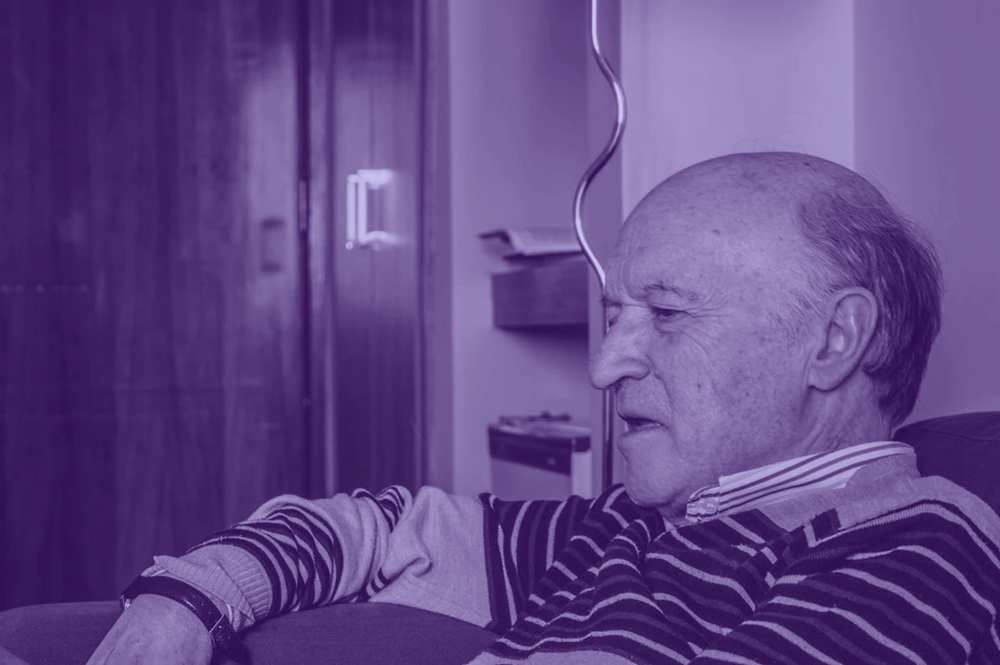Pope Francis, the “People’s Pope”, died on Easter Monday. In the last year of his life, he made 470 daily calls to civilians trapped in Gaza, bearing witness to the ongoing massacre. His final call to Holy Family Church, the sole Catholic Church in the Gaza strip, took place two days before his death. It was a fitting final act for a pontiff who insisted on staying close to the margins—of faith, of society, of comfort.
During Christmas of 2024, the infant Jesus in the Vatican’s annual Nativity Scene wore a keffiyeh, sparking renewed commentary and attention towards Palestine on both social and mainstream media. This was not the first time Francis turned to visual gestures or used the moral theatre of the Church to challenge the world. In April 2016, at the height of Europe’s migration crisis, he visited a refugee camp on the Greek island of Lesbos, flanked by Ecumenical Patriarch Bartholomew, the global leader of Eastern Orthodoxy. He flew back to Rome with twelve Syrian refugees of various confessions. This was his rebuke to fortress Europe: a reminder that Christian ethics demand more than rhetoric.
From the start of his pontificate in 2013, Jorge Mario Bergoglio, the first Jesuit pope, the first from the global south, and the first to take the name Francis—after the saint who renounced wealth—shook off the baroque grandeur of the Vatican. He chose a modest guesthouse instead of the papal apartments, and eschewed traditional papal garb. There were reports of people seeing him around Rome in lay clothing.
Months into his papacy, Francis released Evangelii Gaudium, a papal exhortation that condemned unregulated capitalism as a "new tyranny" and declared, simply: “Such an economy kills.” His critique of “the absolute autonomy of markets” placed him firmly within the Church’s tradition of Catholic social teaching, but its bluntness was rather unprecedented.
In his 2014 address to the European Parliament, Pope Francis offered a stark moral diagnosis of contemporary society’s drift toward individualism and alienation. Drawing on philosophical language, he warned against a conception of the human being as a monad—a self-contained unit, increasingly isolated and indifferent to others. This metaphor, rooted in ancient and modern philosophy, served to capture what he saw as a growing detachment from communal responsibility, solidarity, and the relational fabric that sustains human dignity.
Francis's vision was not merely a critique but a call to reawaken Europe's founding humanist ideals. He urged political leaders to resist the temptation of technocratic reductionism and economic pragmatism, and instead to build a Europe centered on the “sacredness of the human person.” In a world where loneliness and fragmentation often define the human condition—from the elderly left behind to migrants adrift in search of hope—his invocation of the monad stands as a poignant reminder: that to restore our common life, we must first reclaim our connection to one another.
In 2015, he released Laudato Si’, the first encyclical ever devoted entirely to ecological concerns. “The Earth, our home, is beginning to look more and more like an immense pile of filth,” he wrote. The same year, he addressed the U.S. Congress—a first for any pope—and urged legislators to build a society rooted in compassion for the poor and dignity for immigrants. He gave voice to the “throwaway culture” that, he warned, devalues not only the environment but human lives.
His openness extended beyond environmental and economic justice. At his very first press conference in 2013, Francis was asked about gay priests. His reply became an emblem of his papacy: “If someone is gay and he searches for the Lord and has good will, who am I to judge?” In Amoris Laetitia, his 2016 exhortation on family life, he encouraged divorced and remarried Catholics—long barred from the eucharist—to return to the sacraments through personal discernment. It was not a revision of dogma, but an invitation to mercy over judgment.
This emphasis on mercy extended to other sacramental practices. Francis advocated for the use of general absolution: a practice of communal forgiveness where during a mass one could pray, and be forgiven directly without the need for a formal confession, (a practice previously reserved for wartime or emergencies).
To some traditional Catholics, this could sound alarmingly... Protestant. And indeed, Francis made remarkable strides towards his counterparts in the various other denominations, including Protestant churches, and Eastern Orthodoxy. At Easter, he welcomed Orthodox bishops into shared liturgical space, signaling a commitment to unity through mutual respect. In 2016, he joined Lutheran leaders in Lund, Sweden, to commemorate the 500th anniversary of the Protestant Reformation. “Unity does not imply uniformity,” he reminded listeners. One of the most poignant expressions of this unity was his recognition of an “ecumenism of blood.” Francis repeatedly emphasized that modern martyrs—whether Catholic, Protestant, or Orthodox—were united in their witness to faith, even if divided by theology.
The general spirit of bridge-building extended far beyond Christianity. In 2019, he became the first pope to visit the Arabian Peninsula and, with the Grand Imam of Al-Azhar, co-signed the Document on Human Fraternity in Abu Dhabi. It declared “pluralism and diversity of religions” as part of God’s will: a theologically daring statement aimed at promoting Muslim-Christian friendship.
Still, critics—and indeed many of the obituaries of the last several weeks—appear eager to note the limits of his reforms. Case in point, Francis never formally altered core doctrines of the Catholic Church on contentious issues such as abortion or the ordination of women. He consistently upheld the Church’s teachings that unborn life must be protected and that the priesthood is reserved for men. This disappointed some on the Catholic left, even as his broader posture continued to provoke unease—and at times outright ire—among conservative factions in the Church.
Under Francis, these tensions within the Catholic Church rose to a point that some observers began to speak openly of the risk of a schism: in particular, conservative American bishops accused the pontiff of sowing confusion and undermining doctrine. While Francis rarely responded directly to such critiques, his vision of a synodal Church—one shaped by listening, decentralization, and lay inclusion—stood in sharp contrast to their calls for moral rigor and hierarchical authority.
And while Francis left certain doctrines untouched, his reforms did touch some of the Church’s most entrenched structures: in particular where theology meets contemporary human rights. In 2018, he revised the Catechism of the Catholic Church to declare the death penalty “inadmissible because it is an attack on the inviolability and dignity of the person.” Where the Church had long permitted capital punishment in rare cases, Francis introduced a categorical rejection and committed the Church to work “with determination for its abolition worldwide.”
He also took unprecedented steps to address the clergy sex abuse crisis. In 2019, he convened a landmark four-day summit in Rome on the topic, at the conclusion of which he vowed an “all-out battle” against abuse and soon issued sweeping new norms—Vos Estis Lux Mundi—which required every diocese worldwide to establish systems for reporting abuse. This included the first time mandate that priests and religious report suspected abuse or cover-ups by superiors. This “zero tolerance” framework was as serious a confrontation as possible with the systemic failure that had harmed so many and badly damaged the Church’s credibility.
On the role of women in Church governance, Francis made historic, if measured, progress. In 2022, he issued a new apostolic constitution, Praedicate Evangelium, that opened top leadership positions in the Roman Curia to any baptized layperson, including women. He appointed numerous women to high-ranking roles that had long been reserved for clerics. In 2023, he approved changes allowing both women and laymen to vote in the Synod of Bishops—a body that had, for centuries, been reserved for clergy. For the first time in history, approximately 50 women were full voting members at the Synod assembly.
This commitment to reform was grounded not only in pastoral pragmatism but in deep intellectual and theological tradition. As the first Jesuit pope, Francis drew from a rigorous tradition of discernment, contemplation, and scholarship. His writings—encyclicals, apostolic exhortations, homilies, and speeches—form a rich and cohesive archive, intellectually serious yet accessible to the average person. The prose is, at times, unmistakably literary in tone. Consider, for instance, one of his final homilies—delivered on his behalf during the Easter Vigil, just two days before his death, when he was no longer able to read it himself.:
“It is night, as the Paschal candle slowly advances towards the altar. It is night, when the chant of the Easter Proclamation invites heartfelt rejoicing, “Be glad, let earth be glad, as glory floods her, ablaze with light from her eternal King… knowing an end to gloom and darkness” (Exsultet). It is in the last hours of the night that the events take place that are recounted in the Gospel we have just heard (cf. Luke 24:1) [...] The bewilderment and fear of the disciples is still enshrouded by darkness. Everything takes place in the night.
The Easter Vigil thus reminds us that the light of the Resurrection illumines our path one step at a time; quietly, it breaks through the darkness of history and shines in our hearts, calling for the response of a humble faith, devoid of all triumphalism. The Lord’s passage from death to life is not a spectacular event by which God shows his power and compels us to believe in him. For Jesus, it was not the end of an easy journey that bypassed Calvary. Nor should we experience it as such, casually and unthinkingly. On the contrary, the Resurrection is like little seeds of light that slowly and silently come to take root in our hearts, at times still prey to darkness and unbelief.”[1]
In an age of reason—and moreover, an era of mechanized unbelief, in which there is a kind of deistic faith in technology—that this elderly man would move so many, religious and irreligious alike, is no small thing. His papacy reminded the world that moral authority can still reside in humility; that the language of love, mercy, and solidarity might still carry weight.
Francis continuously returned his focus to the margins. Throughout his papacy, on Holy Thursday, he would kneel before women, Muslims, and prisoners, washing their feet, as Jesus did in the New Testament. These small but radical acts embodied a theology of closeness: the conviction that Christ is found not in power, but in proximity to those the world forgets.
Across the Global South, Pope Francis was embraced as a champion of the poor and ally against inequality. While his reforms provoked conservatives, Catholics and non-Catholics alike saw in him a person who had made the Church feel more human, more porous, more responsive. For Francis, this was the mission of the Church—not to dominate, but to serve as “a field hospital”: tending to wounds, fostering peace, and walking alongside the broken.
Even as his strength waned, his commitment to closeness to the people never wavered. Confined to a wheelchair and visibly weakened after weeks on a respirator, he continued to greet crowds of well-wishers—up until Easter, the very day before his death. Only days earlier, during Holy Week, Francis made a last visit to a Roman prison, Regina Coeli. Turning to the press as he departed, his voice scarcely audible, gasping for breath, he said: “Whenever I walk through those doors, I think, why them and not me?”
Pope Francis, Easter Homily, 2025. ↩︎








